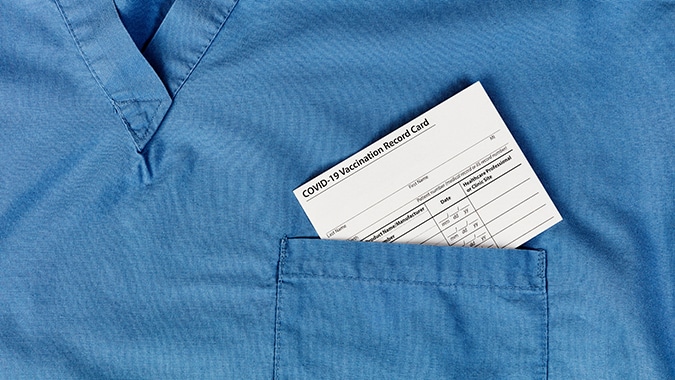With the July 15 tax-filing deadline − postponed from April 15 – only a few days away, the IRS is reminding taxpayers who have yet to file their tax returns that IRS.gov has tools and services to help them meet their tax obligations.
IRS tax help is available 24 hours a day on IRS.gov. Whether filing a tax return, requesting an extension or making a payment, the IRS website can help last-minute filers on just about everything related to taxes. Taxpayers can also use the Interactive Tax Assistant tool to answer many tax questions they may encounter.
The IRS reminds taxpayers they have a range of expert help available through a qualified tax professional, including certified public accountants, enrolled agents and attorneys. The IRS encourages people who need the help of a tax professional to visit a special page on IRS.gov.
Prepare and file taxes for free
Taxpayers also have several options for preparing and filing their tax returns:
- Taxpayers with income of $69,000 or less can use IRS Free File to find free tax preparation software.
- Taxpayers with incomes above $66,000 and comfortable doing their own taxes can use Free File Fillable Forms for free.
- Use commercial tax prep software to prepare and file taxes through IRS approved electronic channels.
- Use an authorized e-File provider accepted by our electronic filing program. Authorized IRS e-file providers are qualified to prepare, transmit and electronically file returns.
- Members of the military and qualified veterans can use MilTax, a free online tax service provided by the Department of Defense and Military OneSource.
Receive refunds faster
The fastest way to receive a refund is to file electronically and use direct deposit. Taxpayers who file electronically and request direct deposit for their refund need to know that:
- Nine out of 10 tax refunds are issued in 21 days or less.
- The best way to check on a refund is the Where’s My Refund? tool.
- The Where’s My Refund? tool available on IRS.gov and the IRS2Go mobile app.
- Where’s My Refund? is updated once a day, usually overnight.
- Refunds can be divided into up to three accounts.
Delays for paper tax returns
The IRS is experiencing delays in processing paper tax returns due to limited staffing. This is another reason that taxpayers should choose to electronically file their taxes.
Taxpayers who filed a paper tax return and expect a refund may experience a delay beyond the normal time frame of four to six weeks from the time they mailed the return. The IRS will process paper returns in the order they are received.
Taxpayers should not file the same return again or call the IRS if they filed a paper tax return and are experiencing a refund delay.
Get more time to file
Individual taxpayers who need additional time to file beyond the July 15 deadline can request a filing extension to Oct. 15 in one of two ways:
- Filing Form 4868 through their tax professional, tax software or using the Free File link on IRS.gov.
- Submitting an electronic payment with Direct Pay, Electronic Federal Tax Payment System or by debit, credit card or digital wallet options and selecting Form 4868 or extension as the payment type. The automatic extension of time to file will process when taxpayers pay all or part of their taxes, electronically, by the July 15 due date. An extension to file is not an extension to pay. Taxes are still due by July 15.
Special rules may apply for some military personnel if they are:
Pay with ease
Taxpayers can file now and schedule their federal tax payments up to the July 15 due date. They can pay online, by phone or with their mobile device using the IRS2Go app. When paying federal taxes electronically taxpayers should remember:
- Electronic payment options are the optimal way to make a tax payment.
- They can pay when they file electronically using tax software online. If using a tax preparer, taxpayers should ask the preparer to make the tax payment through an electronic funds withdrawal from a bank account.
- IRS Direct Pay allows taxpayers to pay online directly from a checking or savings account for free, and to schedule payments up to 365 days in advance.
- Taxpayers can choose to pay with a credit card, debit card or digital wallet option through a payment processor. The payment processor adds a fee; no fees go to the IRS.
- The IRS2Go app provides the mobile-friendly payment options, including Direct Pay and through payment providers.
- Taxpayers may also enroll in the Electronic Federal Tax Payment System and have a choice of paying online or by phone by using the EFTPS Voice Response System.
Get more time to pay
Qualified taxpayers can choose to pay any taxes owed over time through an installment agreement. An online payment plan can be set up in a matter of minutes. Interest and late-payment penalties continue to accrue on any unpaid taxes after July 15.
Payment options include:
- Short-term payment plan (paying within 120 days).
- Long-term payment plan (paying in more than 120 days).
However, a taxpayer’s specific tax situation will determine which payment options are available.
The IRS has more information for taxpayers who owe taxes, but cannot afford to pay the full amount.
Get the full picture
Taxpayers can go to IRS.gov/account to securely access information about their federal tax account. They can view the amount they owe, access their tax records online, review their payment history and view key tax return information for the most recent tax return as originally filed.
